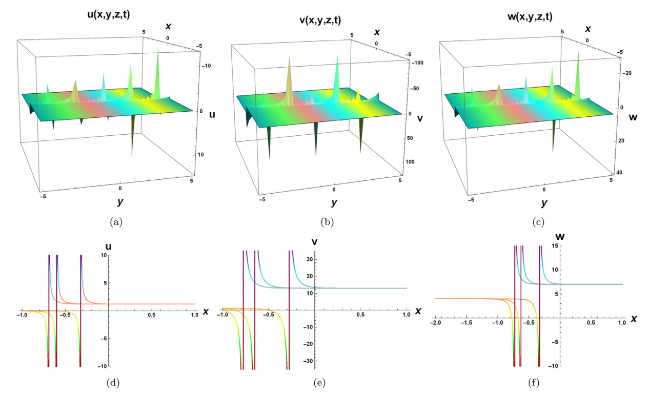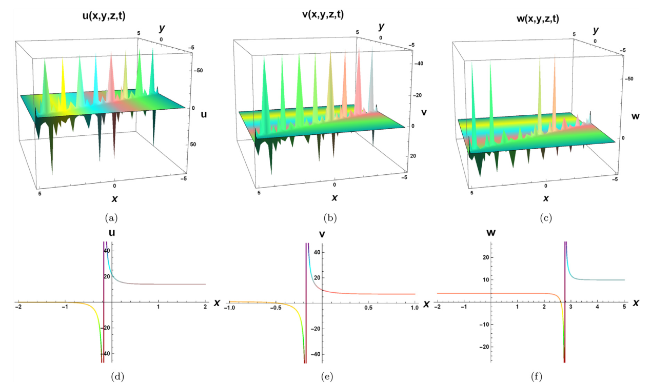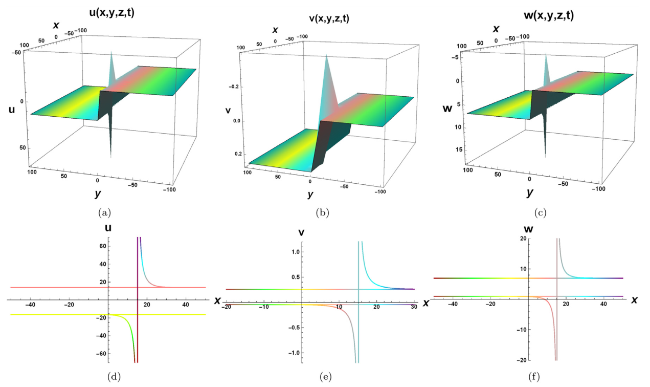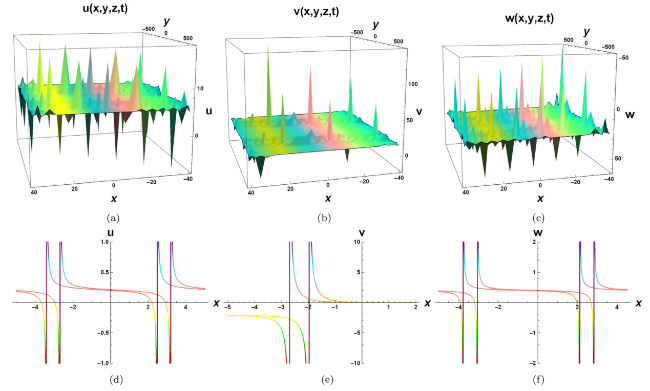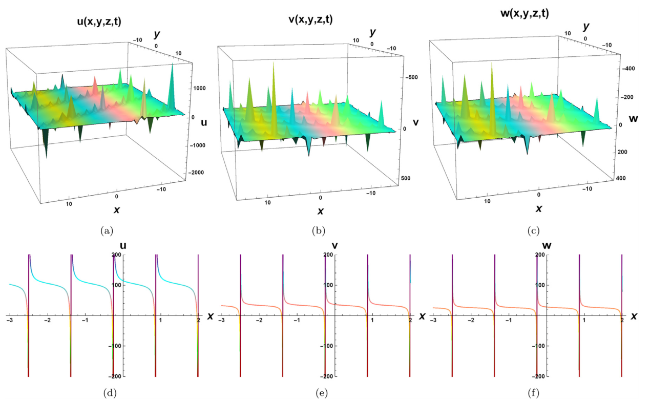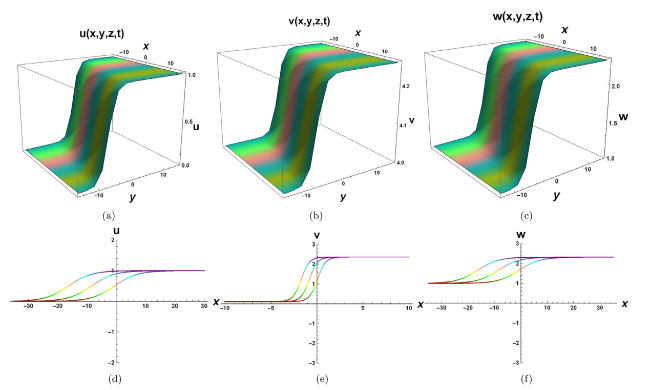Nonlinear evolution equations (NLEEs) have sparked a flurry of research articles in establishing a diverse set of solutions for various complex physical models. Several models have been implemented in order to achieve meaningful progress by providing new solutions and simplifying calculations. Among the mathematical approaches used are the Lie symmetry reductions method, Hirota bilinear method, Exp-function method, Darboux transformation method, sine cosine method, modified Ricatti method, Painlev analysis method, Jacobi elliptic function method, generalized exponential rational function method, and various ansatz methods [
1], [
2], [
3], [
4], [
5], [
6], [
7], [
8], [
9], [
10], [
11], [
12], [
13], [
14], [
15], [
16], [
17], [
18], [
19], [
20], [
21], [
22], [
23], [
24], [
25], [
26], [
27], [
28], [
29], [
30], [
31], [
32]. Solitary waves are a special type of natural ocean phenomenon that is not caused by land movement, lasts only a few seconds, occurs only in a small area, and occurs most frequently far out at sea. Many mathematicians and physicists have been researching ocean physics, marine engineering, acoustics, and hydrodynamics for a long time. Many research works [
33], [
34], [
35], [
36], [
37], [
38], [
39], [
40], [
41], [
42] have investigated solitary waves and multiple soliton solutions, particularly the interaction behaviour of travelling waves and dispersive waves, such as trigonometric functions, hyperbolic functions, and exponential functions [
43], [
44], [
45], [
46], [
47], [
48], [
49], [
50], [
51]. In those fields, emphasis has been placed on Burgers-type equations for various wave processes [
52], [
53], [
54], [
55], [
56], [
57]. The Korteweg-de Vries-Burgers equation [
52], the Burgers-type equation [
53], the (2+1)-dimensional generalized Burgers equation [
54], the (2+1)-dimensional coupled Burgers system [
55], [
56], fractional Burgers-type equations with conformable derivatives [
57] and the coupled (2+1)-dimensional Burgers system [
58] are some examples of the Burgers type equations. The Burgers system describes the wave propagation processes for nonlinear evolution equations in oceanography, marine engineering, and fluid dynamics, such as nonlinear phenomena in turbulence, diverse non-equilibrium, and interface dynamics.


